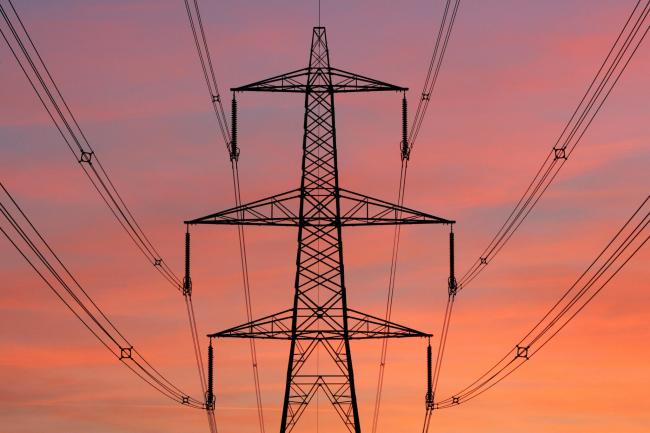Articles Menu

Jan. 31, 2023
While emissions of sulfur hexafluoride (SF6), the world’s most potent greenhouse gas, have fallen sharply in the U.S. in recent decades, actual emissions are significantly higher than the official government estimates, a new study concludes.
Across the United States, 390 metric tons of SF6 were emitted into the atmosphere in 2018, the most recent year for which data are available, according to a new study resulting from a joint initiative between the National Oceanic and Atmospheric Administration and the Environmental Protection Agency. The study, designed to better quantify SF6 emissions in the U.S., was published in the journal Atmospheric Chemistry and Physics.
SF6, a man-made gas used by electric utilities to quickly interrupt the flow of electricity in high voltage circuit breakers, is also the most potent greenhouse gas ever studied by the Intergovernmental Panel on Climate Change. The gas is 25,200 times more effective at warming the planet than carbon dioxide, making even small releases of SF6 cause for concern.
The volume of SF6 released in 2018 is less than half of what it was a decade prior, but still equaled the annual greenhouse gas emissions of 2.1 million automobiles, according to the Environmental Protection Agency’s greenhouse gas equivalency calculator.
The vast majority of SF6 emissions come from the electric power sector and occur either during routine servicing of electrical equipment or through ongoing leaks in aging or poorly sealed storage tanks and other electrical equipment.
“Substantial additional emission reductions can be achieved if more efforts were put into minimizing emissions during servicing or through improving sealing materials in the electrical distribution systems,” said Lei Hu, a researcher with the National Oceanic and Atmospheric Administration and the study’s lead author.
The Electric Power Systems Partnership, a voluntary program run by the EPA, has helped electric utilities reduce emissions of SF6 by approximately 80 percent since 1990, according to the agency. Emissions reductions have come through the use of newer, less leak-prone equipment and better servicing practices that prioritize capturing and reusing SF6 gas. SF6-free circuit breakers are also increasingly being deployed by some electric utilities as alternative technologies become available.
However, not all electric utility companies participate in the EPA’s emission reduction program. Duke Energy, one of the largest electric power corporations in the U.S. based on revenue, does not participate and Duke Energy Carolinas, the company’s subsidiaries in North and South Carolina, had the highest SF6 leak rate of any electric utility that reported emissions to the EPA in 2021.
Duke Energy spokesman Jeff Brooks told Inside Climate News in November that the company was “working to learn more about” the EPA-industry partnership to reduce SF6 emissions, a program that has been operating since 1999. The company declined to comment on Tuesday as did the Edison Electric Institute, a trade association that represents all U.S. investor-owned electric companies.
In its annual U.S. greenhouse gas inventory published in April, the EPA mentioned preliminary data from NOAA and EPA scientists, which suggested higher-than-expected U.S. emissions of SF6.
“The preliminary results of research conducted by the National Oceanic Atmospheric Administration indicate that U.S. emissions of SF6 are significantly higher than what is being estimated in the current inventory for emissions of SF6 from all sources,” the report said.
The report suggested that the EPA may need to improve its estimates of SF6 emissions from electric utilities that are believed to have relatively low SF6 emissions and are therefore not required to report their emissions to the agency. The report also flagged “end-of-life” emissions from old electrical equipment at the time of disposal as a potential source of higher-than-expected emissions.
Now, the agency is moving forward with some of the changes.
“The EPA has revised its method for estimating emissions of SF6 from these non-reporting facilities,” Melissa Sullivan, a spokeswoman for the agency, said. “Specifically, rather than assuming that the average SF6 emission rate of non-reporting facilities has declined at the same rate as that of reporting facilities, the EPA is now assuming that the average SF6 emission rate of non-reporting facilities has declined much more slowly than the average emission rate of reporting facilities.”
Sullivan said the change will bring the agency’s estimate for SF6 emissions into better agreement with emissions inferred from atmospheric observations, starting with the next annual U.S. greenhouse gas inventory, a draft of which will be published in February.
Hu said the current study could serve as a guide for other countries as they try to get a better handle on their annual SF6 emissions. Current national inventories like that of the U.S. only account for half of all global SF6 emissions based on estimates derived from global atmospheric concentrations of the pollutant.
“There is a huge gap in the global reporting of SF6,” Hu said. “Maybe other countries can consider a similar approach so that they can improve the overall accuracy of their national greenhouse gas reporting.”
Phil McKenna is a Boston-based reporter for Inside Climate News. Before joining ICN in 2016, he was a freelance writer covering energy and the environment for publications including The New York Times, Smithsonian, Audubon and WIRED. Uprising, a story he wrote about gas leaks under U.S. cities, won the AAAS Kavli Science Journalism Award and the 2014 NASW Science in Society Award. Phil has a master’s degree in science writing from the Massachusetts Institute of Technology and was an Environmental Journalism Fellow at Middlebury College.
[Top photo: Electricity pylon and power cables. Credit: Tim Graham/Getty Images]